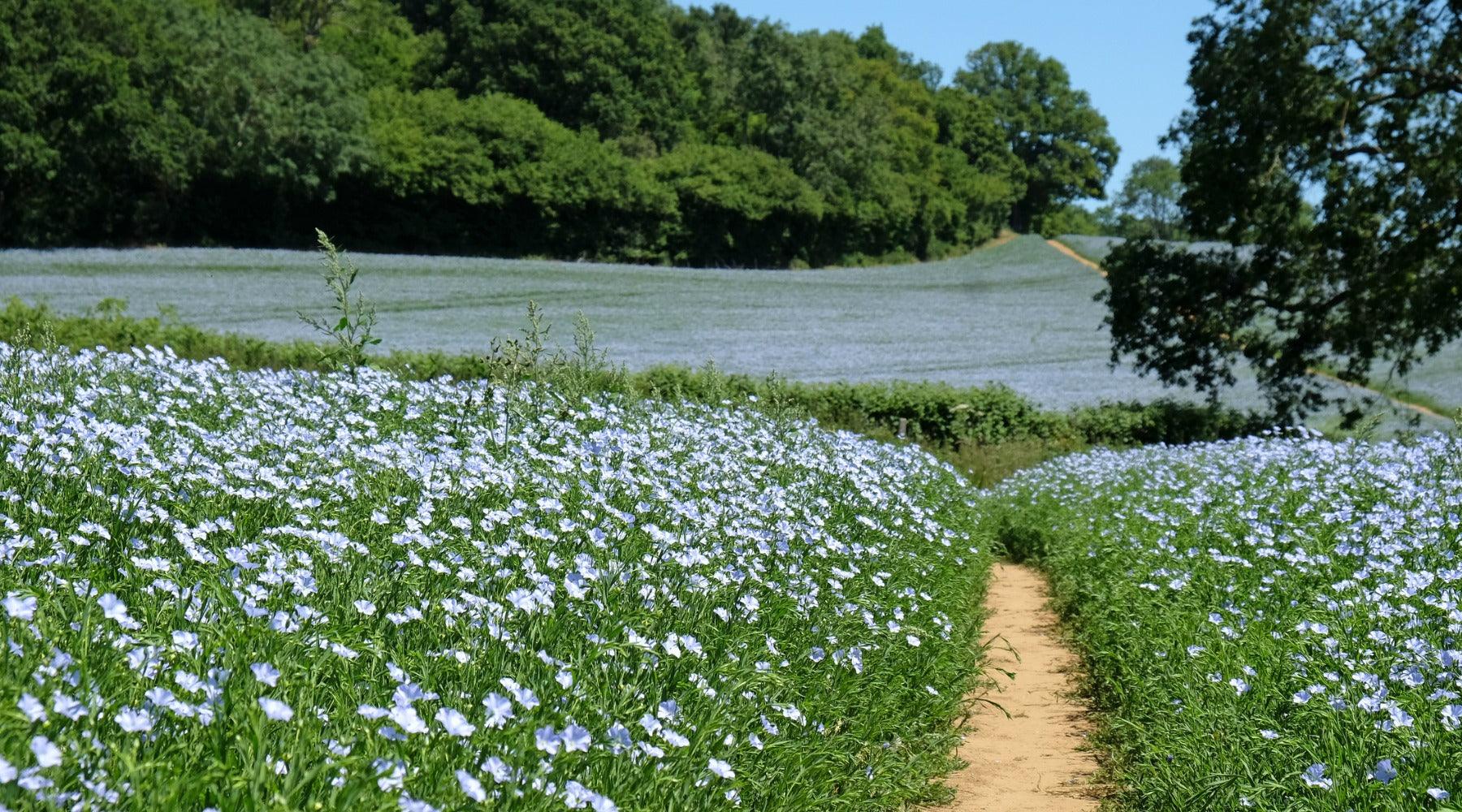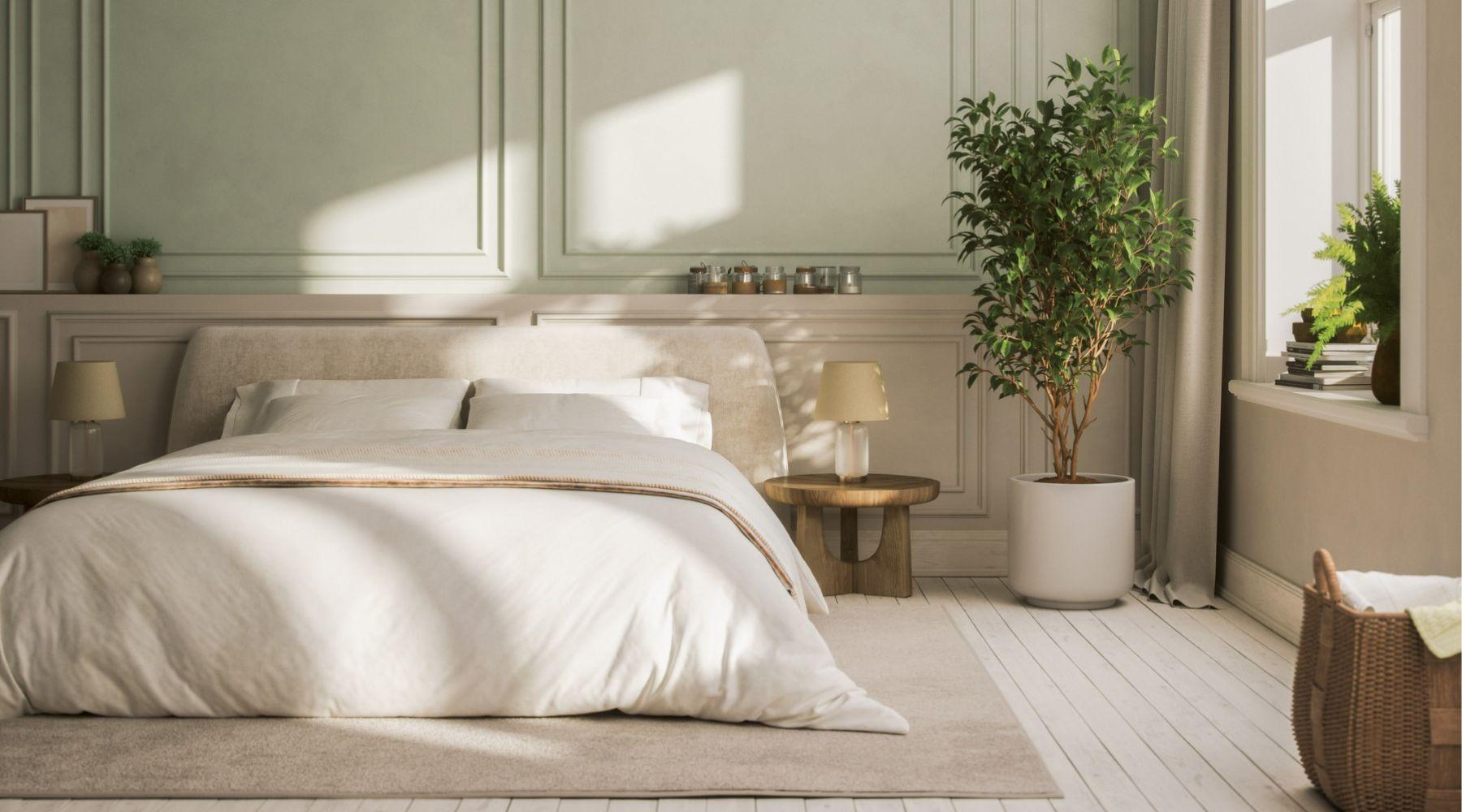
How Organic Linen Bedding is Made
Organic linen bedding, prized for its breathability, durability, and sustainability, has a history going back 38,000 years. The journey from flax seed to finished linen bedding is fascinating, involving multiple stages that ensure the highest quality and environmental responsibility. Here, we delve into how The Modern Dane’s organic linen bedding is made, from cultivating flax seeds to the final touches.
Cultivating Flax: the Journey Begins
The process starts with the careful cultivation of flax seeds. Flax is primarily grown in the fertile regions of Belgium, France, and the Netherlands, known for their ideal climate and rich soil. These regions provide the perfect environment for flax plants to thrive, which is essential for producing high-quality linen fibers without the use of artificial fertilizer or pesticides. All farmers in this region must sign the European Flax Charter, committing to zero irrigation, zero genetically modified organisms (GMOs), and zero waste.
The seeds are sown in early spring, typically between mid-March and mid-April. Compared to notoriously water-thirsty cotton, flax plants require minimal water, relying entirely on natural rainfall and dew. This makes flax a particularly sustainable crop.

Over a period of about 100 days, the flax plants grow rapidly, reaching up to one meter in height. This growth period is critical as the quality of the flax plants directly impacts the final product. During this time, flax plants capture and convert CO2 from the atmosphere, making organic linen production a net carbon-negative industry. Annually, the cultivation of flax in Europe sequesters approximately 250,000 tons of CO2: equivalent to around 8,300 US households!
Flowering and Harvesting: Looking for Signs
In June, the flax plants bloom, covering the fields in beautiful, light blue flowers. This visual spectacle signifies that the plants are nearing maturity. About five weeks after flowering, the flax is ready to be harvested. Unlike many crops, flax is pulled from the ground rather than cut. This method preserves the length and integrity of the fibers, which is crucial for producing smooth and luxurious linen fabric. The roots left in the ground enrich the soil, enhancing its fertility and making flax an excellent crop for rotation.

Retting: Patience Makes Perfect
After pulling, the flax plants undergo retting, a process where the fibers are separated from the stem. Retting is carried out by laying the pulled flax in the fields, where natural microorganisms break down the pectins binding the fibers. This method relies entirely on rain and dew, adhering to strict environmental standards and avoiding the use of chemicals. Traditionally, retting was done in rivers, but modern European farmers favor field retting to minimize environmental impact.
Scutching and Combing: Refining the Fibers
Once retting is complete, the flax undergoes scutching, a mechanical process that separates the long fibers from the short ones and other parts of the plant. Scutching is entirely chemical-free, depending purely on the skill of the farmers and scutchers. The short fibers, also known as tow, are used in various industrial applications, while the long fibers are reserved for creating high-quality linen textiles. Shives—straw fragments recovered during scutching—are repurposed for making paper, particleboard, and animal bedding, ensuring zero waste.
The next step is combing, where the flax fibers are cleaned, and any remaining impurities are removed. During this process, the fibers are aligned and stretched into continuous ribbons. This step is essential for producing smooth and uniform linen yarn, which is critical for weaving high-quality linen fabric.

Spinning: Transforming Fibers into Yarn
The combed flax fibers are then spun into yarn. This involves soaking and spinning the fibers in water heated to 60°C (140°F), which helps in separating the fibers and making them pliable for spinning. The result is a fine, high-quality thread that is ideal for weaving. The yarn is then bleached using environmentally-friendly peroxide-based agents, as opposed to harmful, chlorine-based ones.
Weaving: Crafting the Fabric
The spun linen yarn is then sent to our specialized weaving mill in Guimaraes, Portugal. This mill is certified by GOTS (Global Organic Textile Standard) and OEKO-TEX 100® Class 1, which ensures adherence to stringent sustainability and safety standards. The weaving process transforms the yarn into fabric, maintaining the integrity and quality of the flax fibers. Skilled artisans use both traditional techniques and modern machinery to weave the fabric, ensuring a high-quality final product.
Finishing: the Final Touches
During the final stages of organic linen production, the fabric is “garment-washed” with enzymes to achieve a soft, supple texture. The fabric is then cut and sewn into duvet covers and pillowcases. Each piece is meticulously crafted, with the addition of labels and buttons, to create a finished product that is both luxurious and eco-friendly.
Sustainability: Our Commitment to the Planet
One of the standout features of organic linen bedding is its sustainability. Flax cultivation is inherently sustainable, with the plants requiring minimal water and contributing to soil health through crop rotation. Additionally, the production processes involved in making linen—from retting to scutching—are free from harmful chemicals. This commitment to sustainability extends to every stage of production, making linen an ethical bedding choice. Our organic linen duvet covers are durable and long-lasting, so you won’t need to replace them often: good for the planet, and good for your pocket.
Why Choose The Modern Dane?
The process of transforming flax into organic linen bedding is a testament to our love of both traditional European craftsmanship and modern sustainability practices. Each step, from sowing the seeds to the finishing touches, is carried out with meticulous attention to detail and a commitment to environmental stewardship. In addition, organic linen’s natural properties, such as its breathability and hypoallergenic nature, make for deep, uninterrupted sleep.
Our organic linen bedding not only promises a luxurious sleep experience but aligns with the values of sustainability and ethical production. Don’t just take our word for it: our products meet the rigorous social, environmental and quality criteria of the Global Organic Textile Standard (GOTS) and OEKO-TEX 100® Class 1 (the highest level of certification). We also offset shipping carbon emissions through our partnership with Planet, so you can shop completely guilt-free.
Do you own any linen garments? Would you consider going organic? Let us know on Instagram, Pinterest, Facebook or Twitter!






Leave a comment
This site is protected by hCaptcha and the hCaptcha Privacy Policy and Terms of Service apply.